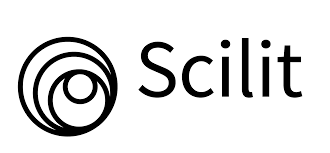Seasonal Variation in the Activity Budget and Daily Path Length of Semi-Provisioned Rhesus Macaques (Macaca mulatta) in Daunne Forest, Nawalpur, Nepal
Abstract
Rhesus macaques (Macaca mulatta, Mammalia: Primates: Haplorhini: Cercopithecidae) show a great deal of adaptability in different types of habitats. Understanding how these animals allocate their time with regard to their daily activities and ranging behavior is helpful to the design of effective conservation plans by allowing us to better understand their ecological necessities and behavioral responses to environmental changes. This study examined seasonal variation in the activity budget and ranging behavior of a semi-provisioned group of rhesus macaques inhabiting the Daunne Devi Temple area in the Daunne Forest, a subtropical forest in mid-hill of central Nepal. Behavioral data were collected on the adult members of the group using focal animal sampling from 27 October 2021 to 10 May 2022 (for a total of 29 days /227 hours of observation) during three time periods of the day: morning, 7.00–11.00 am; afternoon, 11.00–2.00 pm; and late afternoon, 2.00–6.00 pm. Simultaneously, ranging behavior was recorded by instantaneous scan sampling at 10-minute intervals with the aid of a GPS receiver. The adults in the study group spent the majority of the time resting (33.83%), followed by moving (26.67%), feeding (22.92%), and grooming (15.42%). Males spent significantly more time resting and moving, whereas females spent significantly more time in feeding and grooming. The time invested by the rhesus macaques in different activities showed seasonal variation, but lacked statistical significance. Daily path length ranged between 540.1–2905.4 m (mean = 1590 ± 576.96 m) with a statistically significant seasonal difference that might be attributed to the number of temple visitors and availability of provisioned food. Although the sample size was small and study duration was short, this is one of only a few studies providing empirical evidence suggesting the seasonal variation in activity budget and daily path length of semi-provisioned rhesus macaques.
Copyright (c) 2023 Indonesian Journal of Primatology

This work is licensed under a Creative Commons Attribution-NonCommercial 4.0 International License.
As our aim is to disseminate original research articles, hence publishing rights is necessary. The publishing right is needed in order to reach an agreement between the author and publisher. As the journal is fully open access, the authors will sign an exclusive license agreement, where authors have copyright but license exclusive publishing rights in their article to the publisher. The authors have the right to:
- Share their article in the same ways permitted to third parties under the relevant user license.
- Retain patent, trademark, and other intellectual property rights including research data.
- Proper attribution and credit for the published work.
For the open access article, the publisher is granted the following rights.
- The exclusive right to publish the article, and grant rights to others, including for commercial purposes.
- For the published article, the publisher applied for the Creative Commons Attribution-NonCommercial-ShareAlike 4.0 International License.

This work is licensed under a Creative Commons Attribution-ShareAlike 4.0 International License.















